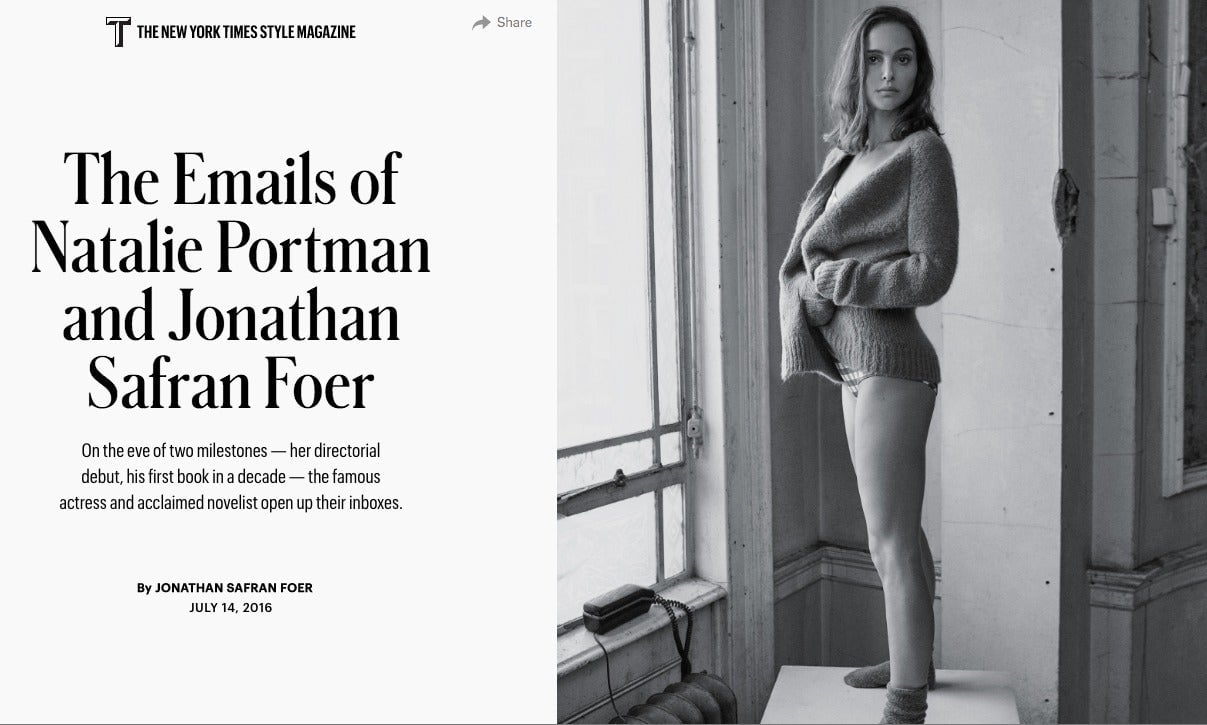Where are Natalie Portman’s pants in the New York Times story about her directorial debut?
The New York Times’ T Magazine has just published a sort-of profile of Natalie Portman, tied to the Oscar-winning actress and deserving Harvard graduate’s directorial debut. It’s framed as an email exchange between Portman and the novelist Jonathan Safran Foer, and ranges in topic from motherhood to Judaism to the vagaries of time.


The New York Times’ T Magazine has just published a sort-of profile of Natalie Portman, tied to the Oscar-winning actress and deserving Harvard graduate’s directorial debut. It’s framed as an email exchange between Portman and the novelist Jonathan Safran Foer, and ranges in topic from motherhood to Judaism to the vagaries of time.
Portman is an Israeli-American who wrestles with the complexities of Israel, which is also the focus of her new movie, based on Amos Oz’s memoir, A Tale of Love and Darkness.
But oddly, mysteriously, despite the seriousness of subject and subject matter, the profile is illustrated almost entirely with images of Portman wearing swimsuits, excepting one shot of her in just a sweater and socks. There is not a pair of pants to be found.

The scenario has led many to publicly wonder where they might have gone.
Though the questioning reached a new pitch with the story’s appearance online today, it started almost as soon as the profile first appeared in the print edition of the Sunday Times. “Where are Natalie Portman’s pants?” Garland Waller, director of the TV Graduate Program at Boston University, asked in the Huffington Post.
As Waller points out, the photos chosen for a major publication such as the New York Times’ T Magazine are carefully considered. Editors are involved, and the photographer of course, as well as a crew of people attending to every aspect of the subject’s appearance. Details down to the lighting are scrutinized.
The problem with the images, if it isn’t self-evident, is how they portray Portman. Though she’s a successful and accomplished woman, the camera primarily emphasizes her body, and the innuendo of her pantslessness. As decades of photography have done to women before her, the pictures needlessly sexualize her. While sexuality is a part of being human, here it’s practically the sole focus.
Pants, of course, have a weighty historical significance in women’s fashion. Amelia Bloomer advocated for them to literally free women, both from the cumbersome, restrictive hoop skirt and from their secondary role in society. It’s a shame to see a woman such as Portman deprived of hers.